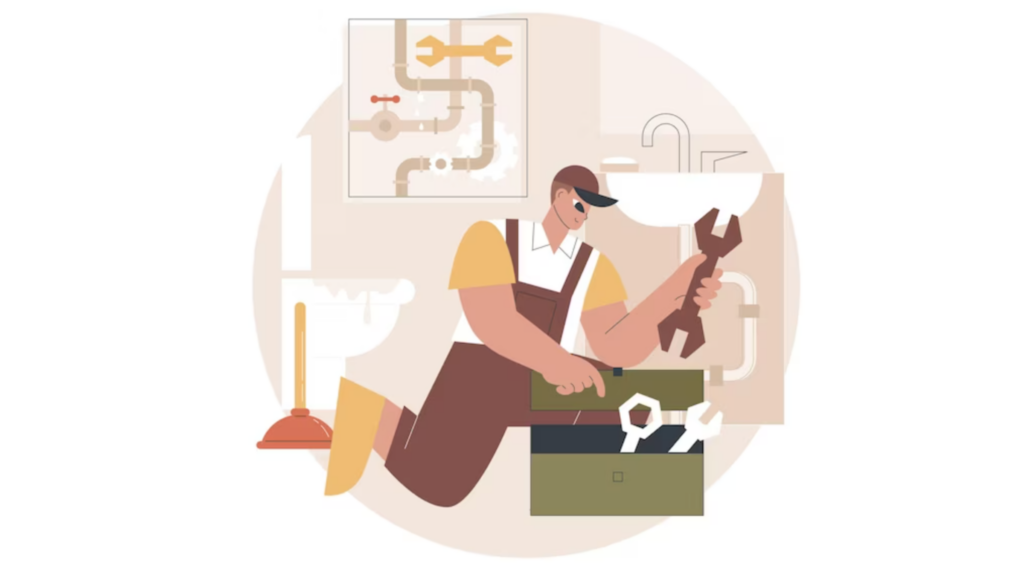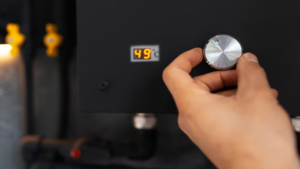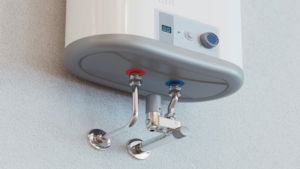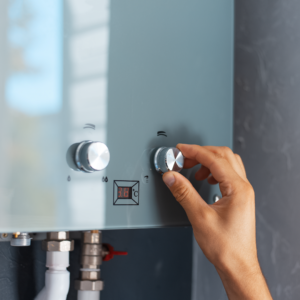Hot water is one of life’s simple luxuries that we often take for granted – until we turn on the faucet and get an icy shock. Few things are more annoying than an unreliable water heater. But before you panic or call a plumber, take a deep breath. Most hot water heater issues can be easily repaired with basic tools and a little know-how.
In this guide, we’ll walk you through the signs that indicate your water heater needs repair, when to attempt DIY fixes versus calling in a professional, and steps you can take to prevent problems in the future. With some quick troubleshooting and preventative care, you can have your hot showers flowing again in no time.
Signs You Need Water Heater Repair

One of the most obvious signs your water heater needs repair is a leak. Small leaks may only cause minor dripping from the tank. But larger leaks can cause water to pool around the base of your heater.
Leaking is usually caused by a faulty tank, loose fittings, or bad seals or gaskets. Catching leaks early is important to prevent water damage and dangerous situations with mold or rotting. Listen for any hissing sounds which can indicate escaping gas or steam from a faulty pressure release valve.
Look for rust colored water which indicates corroded internal components. Cloudy or discolored water points to sediment buildup. A complete lack of hot water means your pilot light may have gone out or the heating elements are no longer working.
Strange smells like rotten eggs can mean sulfur compounds in the tank water. An overheating tank or high energy bills may signal faulty heating elements. Any other abnormal sounds, smells, or appearances can signify it’s time to call a professional.
Water Heater Repair Safety

When it comes to water heater repairs, safety should always be your top priority. Before attempting any repairs, be sure to turn off both the water supply and the power to your water heater. This prevents accidental scalding from hot water or shock from exposed electrical connections.
Locate the shut-off valve for the cold-water line that supplies the water heater and turn it to the closed position. There may also be a separate shut-off valve just for the hot water line. For gas water heaters, turn the gas control valve to “off.”
For electric water heaters, flip the circuit breaker to disconnect power to the unit. There may even be a disconnect switch located directly on the water heater to cut power. Always double check that the power is off by testing with a non-contact voltage tester.
Working on a water heater without turning off the water and power is extremely dangerous. Make safety your first step before tackling any repairs to avoid injury or electrocution. Once the water and power are confirmed disconnected, you can proceed with repairs knowing potential hazards are minimized.
DIY or Professional
Doing the repair yourself or hiring a professional both have pros and cons. Here are some things to consider:
Pros of DIY:
- Cost savings – you avoid labor costs by doing it yourself
- Convenience – you can do it on your own schedule
- Learning experience – you gain knowledge and skills
Cons of DIY:
- Safety risks – water heaters can be dangerous to work on if not done properly
- Complex repairs – some repairs are best left to professionals
- No expertise – lack of experience increases chance of mistakes
- No warranty – no guarantee on workmanship if you do it yourself
Pros of hiring a pro:
- Expertise – professionals have the skills and experience
- Saves time – repairs done quickly by a professional
- Warranty – professionals guarantee their workmanship
- Safety – experts know how to safely make repairs
Cons of hiring a pro:
- Cost – labor isn’t free, can get expensive
- Scheduling – need to work around pro’s availability
- Variable quality – skill levels of technicians vary
Whether DIY or hiring a pro is best depends on the repair needed, your skill level, and budget. Simple repairs like anode rod replacement may be DIY. But complex repairs like heat exchanger, pilot light, or thermocouple issues are best left to the experts. Evaluate each repair job and decide if it’s better to DIY or call a professional.
Types of Repairs

When it comes to water heater repairs, they typically fall into one of two categories – minor repairs or major repairs.
Minor Repairs
Minor repairs are small fixes that can often be done relatively quickly and inexpensively. Examples of minor water heater repairs include:
Resetting the temperature setting – If the water temperature is too hot or too cold, the temperature setting may just need to be adjusted. This is a simple fix.
Replacing the thermostat – The thermostat controls the temperature setting. If it’s broken, replacing this part is a straightforward repair.
Cleaning the thermocouple – The thermocouple is a safety device that shuts off the pilot light if it senses a lack of flame. Cleaning the thermocouple can help the pilot light stay lit.
Replacing the pilot light/ignitor – If the pilot light won’t stay lit, the ignitor may need to be replaced. This is an easy swap.
Fixing a leak in the tank – Small leaks in the tank can often be repaired by patching or sealing the leak.
Replacing a flue/exhaust part – Simple exhaust parts like thermopiles can often be easily replaced.
Major Repairs
Major repairs typically require a professional. Examples of major water heater repairs include:
Full tank replacement – If the tank is leaking extensively or corroded, the entire tank may need replacement. This requires installation of a whole new water heater.
Heat exchanger replacement – The heat exchanger heats the water. If it cracks or breaks, the entire component may need replacement.
Gas valve repairs – Issues with gas valves or the control system will require specialized expertise to properly diagnose and replace parts.
Drain valve/relief valve repairs – Faulty drain valves and relief valves will require replacement, which involves draining and refilling the tank.
Sediment buildup removal – Over time, sediment can build up in the tank, requiring it to be flushed to remove the debris.
As you can see, minor repairs are often DIY-friendly, while major repairs call for the skills of a professional plumber. Understanding the difference between minor vs major water heater repairs can help guide next steps.
When to Replace

Knowing when to replace your water heater vs attempting to repair it can prevent further damage to your home. While repairs extend the life of your system, there comes a point when replacement is the better option.
Signs it’s time for a new water heater:
- Your heater is over 10 years old. The average lifespan of a water heater is 8-12 years. Older heaters have more wear and are prone to corrosion and leaks.
- You frequently run out of hot water. If your heater can’t keep up with demand, it may be undersized for your home’s needs.
- Leaking from the tank. Leaks often start small but get worse over time. Repairing a leaking tank is usually just a short-term fix.
- Rust colored water. This indicates corroded interior tank walls that are flaking off into the water. Avoid drinking this water as rust can contain toxic contaminants.
- Strange smells or rumbling noises. Unusual odors and loud sounds signal internal failure.
- High energy bills. An old, inefficient heater costs more per month to run. Upgrading can pay for itself in energy savings over time.
- No longer code compliant. New heaters have additional safety features. If yours is outdated, replacement improves safety.
Replacing your water heater extends its lifespan another 8-12 years. Weigh repair costs vs replacement if yours shows signs of wear. Ultimately, a new heater prevents leaks, damage, and ensures endless hot water.
Repair Costs

The costs of water heater repairs can vary widely depending on the specific issue and type of water heater. Here are some average repair costs to expect:
- Drain and Flush: $150-300 – This basic maintenance task clears sediment buildup from the tank. It’s recommended annually for tank water heaters.
- Replace Thermocouple: $120-250 – The thermocouple is a safety device that shuts off the pilot light if it goes out. Replacing this part can often fix pilot light issues.
- Replace Burner Assembly: $350-500 – The burner assembly heats the water in gas tankless heaters. Replacing it can fix heating problems.
- Replace Control Board: $200-400 – The control board regulates temperature and functions. It may need replacing if malfunctioning.
- Replace Heating Elements: $150-300 – Electric water heaters have 1-2 heating elements that wear out over time. Replacing them restores heating capacity.
- Replace Relief Valve: $150-250 – The T&P valve releases pressure buildup. A faulty one should be replaced to maintain safety.
- Tank Leak Repairs: $300-500 – Leaks in the tank or connections may involve patching or welding repairs to stop the leak.
- Full System Replacement: $1000-2000 – For major issues, like a cracked tank, full replacement may be better than pricey repairs.
Costs vary based on labor rates, part costs, repair complexity, and water heater type. Getting multiple quotes is advised.
Preventative Maintenance

Regular preventative maintenance can help extend the life of your water heater and avoid unexpected repairs or replacement. Here are some tips:
- Drain and flush the tank annually to remove sediment that can build up on the bottom. Refer to your user manual for instructions. This helps the tank run more efficiently.
- Inspect the anode rod if your water heater has one. The rod protects the tank from corrosion. Replace it if it’s worn down.
- Check fittings and pipes for leaks, cracks or corrosion. Replace any faulty parts right away before bigger problems develop.
- For gas water heaters, inspect the venting and make sure there are no obstructions. Check the gas line and fittings.
- For electric water heaters, check the heating elements and thermostats. Make sure electrical connections are tight.
- Clean the outside of the tank to remove dust and debris.
- Consider flushing water lines to remove scale and improve flow.
- Check the pressure relief valve by lifting the lever. Replace it if needed.
- Insulate hot water pipes to reduce heat loss.
- Adjust the temperature setting – 120°F provides energy savings while still delivering hot water.
Regular maintenance extends the life of your water heater, saving on costly repairs or early replacement. It also improves efficiency and safety. Consult your owner’s manual for the recommended schedule.
Water Heater Repair- Final Thoughts
Water heater repair is often necessary over the lifetime of your unit. Key signs that your water heater needs servicing include rusty water, leaks, strange noises, and temperature fluctuations. While some minor repairs can be DIY, more complex fixes are best left to professionals to avoid safety hazards.
The type of repair needed depends on factors like the water heater’s age, type, and the issue at hand. From sediment buildup to heating element replacement, costs vary. However, repair is generally cheaper than purchasing a brand-new water heater. With periodic maintenance and attention to warning signs, many repairs can be avoided or caught early. For more information on water heater repair, contact one of our expert energy advisors and they will be happy to assist you.
Related Posts

Gas Water Heater Vs. Electric Water Heater
Electric vs. gas water heater? We compare efficiency, long-term savings, and upfront costs of both so that you can make an informed decision.

8 Quick and Easy Water Heater Maintenance Tips
Discover water heater maintenance tips and tricks to help you save money and make your home more energy-efficient.

7 Signs You Need a New Electric Water Heater this Winter
Learn how an electric water heater saves money and helps the environment. Know when to replace your old heater with a new energy-efficient electric model.


No Comments